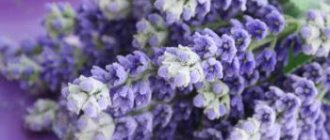Brown of the primary colors
The standard earth or tobacco color is present even in a small palette with watercolor or gouache. Before you make it yourself, it’s worth asking yourself: is brown a mixture of what colors? The answer suggests using three basic shades:
- red;
- blue;
- yellow.
These dyes have acquired the title of “basic”, since they are the base ones used to create any other shades. Brown is only a derivative.
Therefore, the instructions on how to get a brown color are very simple - you just need to combine all the paints listed above in equal proportions.
However, instead of basic paints, if they are not at hand, you can use “intermediate” ones:
- orange;
- green;
- purple or violet.
Since you can get a brown color by mixing the main colors, and the intermediate ones are already the sum of two of them, all that remains is to add the missing tone. During the procedure, you can influence the final shade by increasing the proportion of one or another color. To get the perfect result, you need to choose a suitable base color and combine it with a clean base color.
This is interesting! What is anthracite color? How to get it. Anthracite color combination in the interior.
Mixture of orange and blue colors
Orange is a mixture of red and yellow, so to get brown you just need to add blue.
However, this color can have many variations from soft peach to dirty rust. The ideal shade should be quite dark - garnet or cinnabar. When combining yellow and red independently, a proportion of 1:10 is taken, with the latter predominant.
Very little rich blue is added to the dark orange. It is better to take the initial ratio 1:20. If, when experimenting with how to get brown paint, the achieved shade does not seem deep enough, it is recommended to mix in a little more indigo. You need to mix the latter in small portions so that you can see the difference and stop in time.
Red and green
Green is another secondary color, a product of the union of blue and yellow shades, so it’s easy to calculate what will happen if you mix green and red.
Just as in the case of orange, for mixing it is better to choose soft dark tones, for example, moss. The ideal color can be extracted from the sum of dandelion and indigo in equal quantities. Red is added to green in the same way as
blue and orange are mixed.
First, a small amount of scarlet is taken, but as you mix, you can increase its share, changing the tonality of brown.
Yellow and purple
Purple color is quite difficult to mix with other shades, so this experiment is not used often
. The initial shade should be grape or even eggplant; many people choose purple instead of pure purple. When mixing blue and red yourself, the primary colors are taken in equal quantities.
Dark purple and yellow need to be mixed in very small quantities. In fact, you need to lighten the resulting paint and slightly change the shade. Pure yellow is taken in small quantities - 1/10 of the amount of purple. If you use too much yellow, the final tone will be lighter than standard brown.
Prices for colors
Mixing the base: how to get brown by simply combining base colors
Think about how often you have stopped in the furniture department and chosen your shade among the many colors. The fact is that, despite its versatility and seeming commonplace, brown has dozens of shades. Try mixing watercolors; even with this example it is clear that the quality and saturation of the shade depend on the proportions of the primary colors and the possibility of adding brighteners.
Important! The basic colors for producing brown are red, blue and yellow. By mixing the base, you can get many shades of brown.
Try making brown from ordinary gouache, you will get at least 5 different shades of autumn colors, isn’t it beautiful?
How to get a classic brown color when mixing paints
You've probably often caught yourself wondering why it looks this way when mixing paint, but differently after applying it to the wall? It's simple, it's a matter of lighting, simple physics. However, this must be taken into account when creating the basis.
A comment
Irina Rosenstein
Designer of the studio "Cozy House"
Ask a Question
“When mixing acrylic and oil paints, do not forget to thoroughly mix the white base before adding colors. It’s better to mix the colors in a small container, notice the proportions and only then “cobble” all the colors.
»
Very often, coloring pigments behave aggressively. The same color from different manufacturers will differ in consistency and saturation
To make different tones of brown, you need to alternate the proportions of each shade using the random method. There are special tables for mixing colors. They can be purchased in specialized departments or checked with the seller. For example, the shade of tree bark is obtained from red, yellow and blue (indigo) in a ratio of 1:1:0.5.
How to get red-brown paint
If you need more red tint in a brown tone, then again take three primary colors, but in different proportions: 2: 2: 0.5
The process of mixing colors is fun and interesting. But don’t forget, the chosen shade should be a little darker than the desired one; when the paint dries, it most often becomes a little lighter
Advice! A tone that is too dark can always be diluted with a white base. However, base tints should be used with caution. Changing the proportion can radically change the shade.
How to get dark brown color
Usually in this case a little blue or black is added to the resulting brown tone. The effect will be approximately the same. You will get a darker shade. A deep brown tone can be used when painting walls or highlighting areas. It is highly not recommended to use this as a basis. This will significantly darken the space.
If you did everything correctly, then noble brown is guaranteed to you! The chocolate color of the walls looks elegant
How to make taupe paint
To create taupe paint, add a little white and a little less black to the mixed base. The shades can turn out to be quite interesting.
Just think how many shades of brown can be used in the interior!
Who said you can only use matte colors? You can add not only gray, but also pearlescent shades to the resulting paint. Change the consistency by including natural inclusions, for example, marble chips. This consistency will favorably highlight the shades, giving the interior a unique style.
How to get light brown color
To avoid getting the previous shade of paint instead of light brown, you need to add a little red and yellow to the resulting color. If you need a lighter tone, then add white.
How to get shades of taupe
Other ways to get brown
Brown can be made from a mixture of almost all the tones in the palette, provided that most of them are dark in shade. It is necessary to sum up equal parts:
- green;
- blue;
- black;
- red;
- yellow.
All colors are poured in one by one so that the result is even and uniform. The final result will be quite dark. If you need to lighten the brown, add a little more yellow. This method is ideal when asking how to get brown color from gouache.
Helpful advice!
Another way to get brown involves mixing different shades of the same color. This option is suitable for choosing interesting color schemes for drawings on canvas, but is not used in construction because the result is too unexpected.
What colors make brown?
Proper mixing is a whole science, but today the task is made easier by a ready-made color wheel, which can be seen on the Internet. It gives an understanding that the main colors are yellow, red and blue. The circle represents the result when each of these options is mixed with each other - secondary colors. If you combine them, you get tertiary ones. There are three main laws when mixing:
- Law No. 1. Each color of the circle is a symbiosis of those opposite to the center, which, when mixed, give an additional color, that is, achromatic. Complementaries are clearly defined, for example, red has green, and yellow has blue.
- Law No. 2. Used in practice, it indicates that when mixing paints that are close to each other on the color wheel, new colors of the main color are formed - the one that is located between the mixed pigments. So, to get orange, you should combine red with yellow, and green - mix yellow with blue. By combining the three main components in the form of red, yellow and blue in ambiguous proportions, you can achieve any effect.
- Law No. 3. When mixing the same shades, similar mixtures are obtained. This result is achieved by combining colors that are identical in tone, but different in saturation. Another option: mix several colors through a symbiosis of chromatic and achromatic.
- The most unfavorable forecast for the coronavirus epidemic has been announced
- How to get rid of foot odor. 5 proven recipes
- How not to buy canned fish that are hazardous to health
How to get certain shades of brown
There are more than 10 shades of brown
. The most common ones are:
- bistre;
- sepia;
- brick or umber;
- terracotta;
- brown;
- chocolate;
- ocher;
- cinnamon;
- cognac
Different areas may use different names for the same shade. Obtaining any of the indicated shades is achieved from medium brown by adding one of the primary colors. For example, using yellow you can achieve lightening, red is suitable for umber or brighter tones, and dark sky, on the contrary, will slightly deepen the existing color.
However, the best way to get a dark brown color is to add black, not blue. He intervenes in small portions. This shade can minimize the tonality of classic brown. White paint can be used in the same way for lightening, although yellow can be used to achieve more varied shades.
Practical advice
Mixing paints yourself to get brown, even if the proportions are observed, is a very unpredictable experiment.
This is especially true for construction, since construction paint has a different appearance in liquid and dried form. It is best to initially buy exactly the color that is required rather than mixing different shades. In the case when the instructions on how to make a brown color have become a necessary measure during repairs, you need to test the paint on a small area of the wall. In about a day you will be able to see what the final result will be.
Artists mixing paint directly onto the canvas is a fairly popular and approved technique.
In this case, you can change the tone at your discretion on a painting that has not yet dried. However, the instructions on how to get brown from acrylic paints recommend initially mixing the colors with an angled brush on a scrap smooth surface.
Reference!
Do not mix hair dye unless specified in the manufacturer's instructions. The result of painting often depends on the initial base, and therefore is even less predictable than when mixing building paints.











